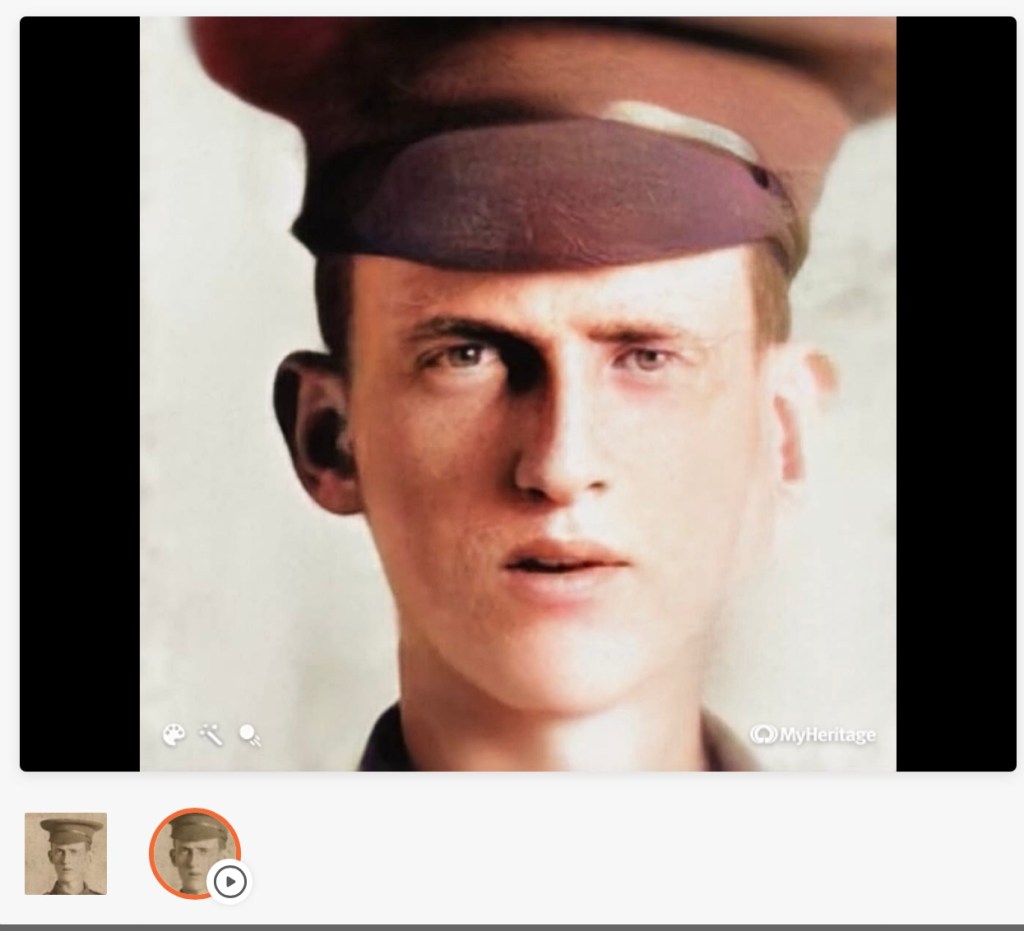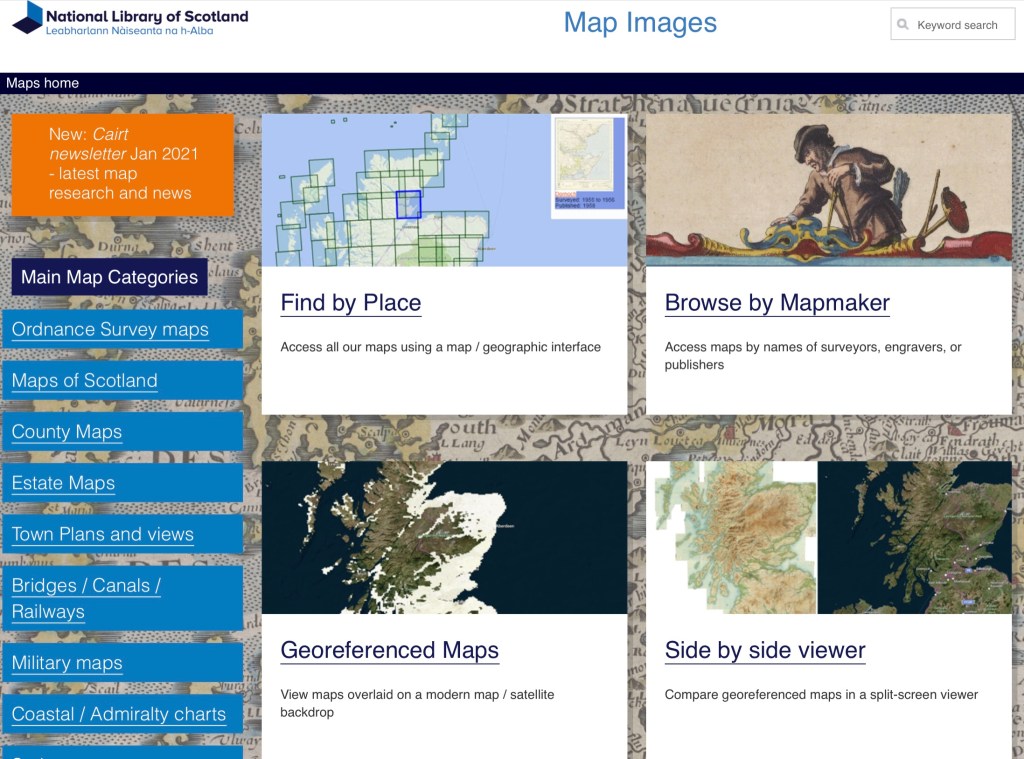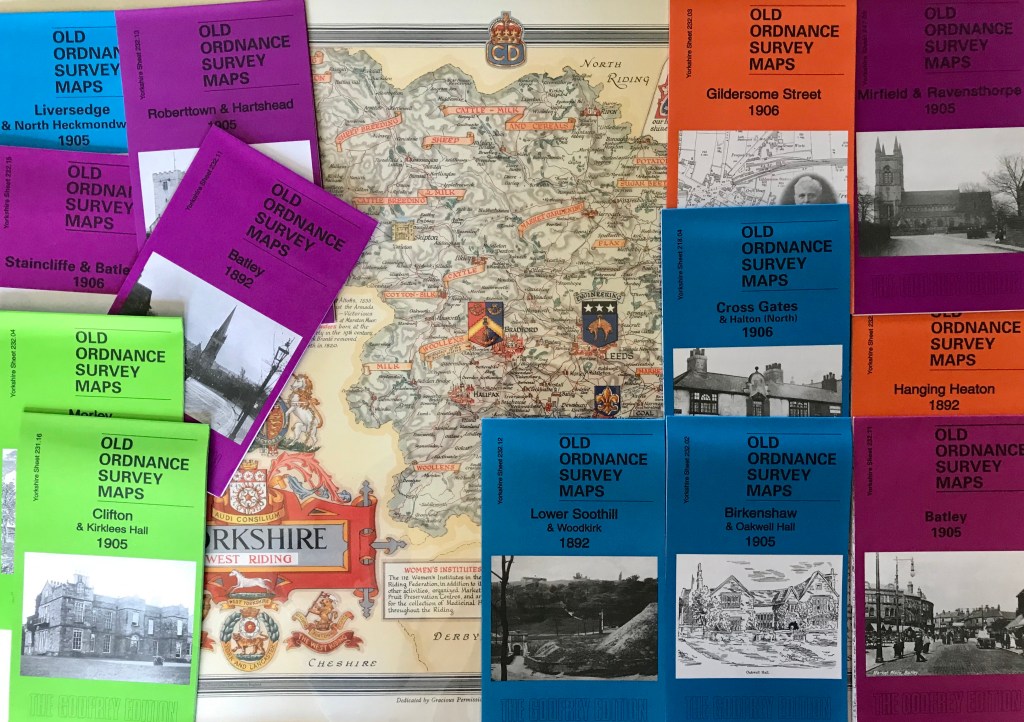Family history research company MyHeritage – whose suite of genealogical tools include record datasets, family tree building capabilities, and DNA testing – have launched a groundbreaking piece of photo animation kit, called Deep Nostalgia™.
Building on it’s photo colourisation and enhancing tools, you can now animate your family history photos, bringing movement, smiles and blinks to the faces of your ancestors. There are several different animation sequences to chose from.
As for cost, you can animate an unlimited number of photos if you have a Complete MyHeritage subscription. Non-subscribers can animate a limited number of photos for free.
It’s a clever piece of wizardry, and really does bring your still images to life in a weirdly compelling way. It is easy to use and the results are shareable. Here are a couple I’ve done. The first is of Jesse Hill, taken in around late 1914/early 1915, who I wrote about here and here.
The still enhanced image is below.

The animation can be viewed by clicking this link.
The second is my nana, taken in around 1916. Again the still enhanced image is below, and the animation can be viewed by clicking this link.

For more information see the MyHeritage blog
And whilst some will love this new feature, there are concerns around potential misuse, with the creation of so-called “deepfake videos.” Some of these fears are discussed here by the BBC.
Personally I’m in the undecided camp over this. It does feel a little disturbing when I view the results. My husband’s reaction was “Wow!” A case of make your own mind up and treat with caution.



